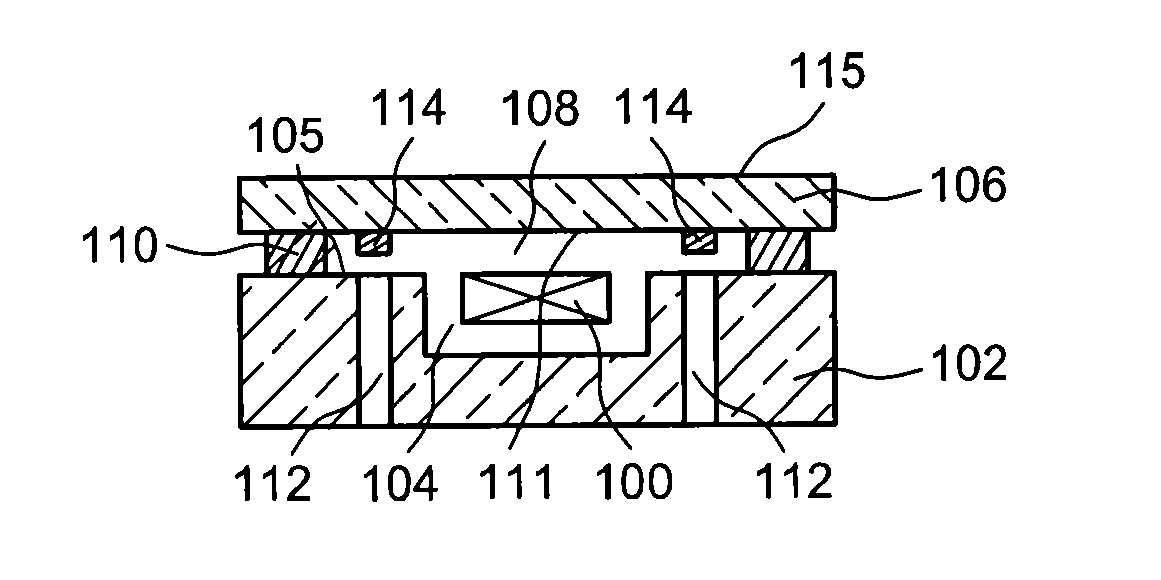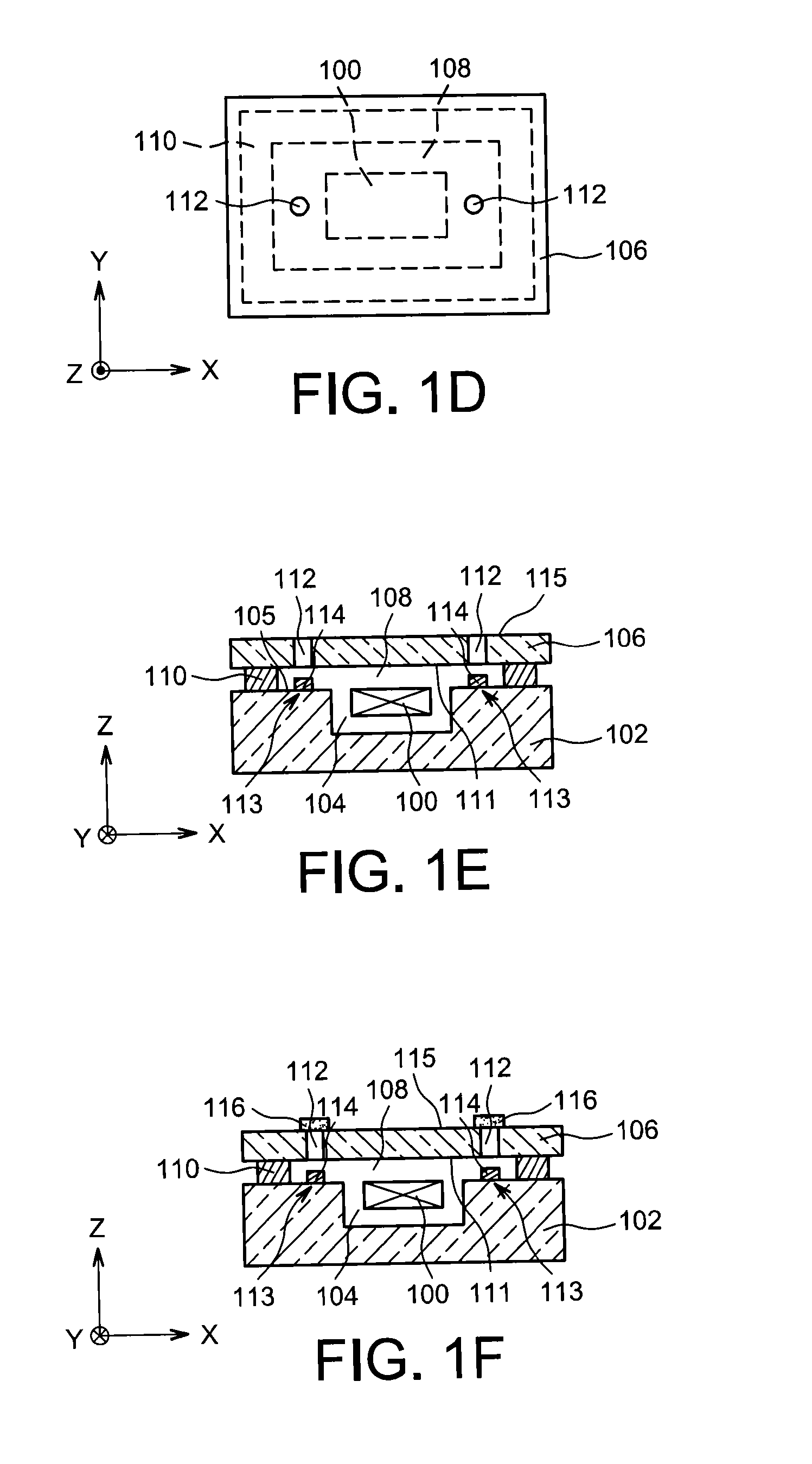Process for encapsulating a micro-device by attaching a cap and depositing getter through the cap
a technology of micro-devices and getters, which is applied in the direction of microstructural systems, semiconductor devices, and semiconductor/solid-state device details, etc., can solve the problems of affecting the quality of the micro-devi
- Summary
- Abstract
- Description
- Claims
- Application Information
AI Technical Summary
Benefits of technology
Problems solved by technology
Method used
Image
Examples
Embodiment Construction
[0016]Thus there is a need to propose a process for encapsulating a micro-device not using a resin to form the cap and not having the disadvantages of the prior art processes disclosed above.
[0017]For this, one embodiment proposes a process for encapsulating a micro-device in a cavity formed between at least one first and one second substrate, comprising at least the steps of:[0018]producing the micro-device in and / or on the first substrate,[0019]attaching and securing the second substrate to the first substrate, forming the cavity in which the micro-device is placed,[0020]producing at least one hole through one of the two substrates, called the drilled substrate, and leading into the cavity opposite a portion of the other of the two substrates, called the receiving substrate,[0021]depositing at least one getter material portion on said receiving substrate portion through the hole,[0022]hermetically sealing the cavity by closing the hole.
[0023]Thus, the hole(s) may be produced throu...
PUM
 Login to View More
Login to View More Abstract
Description
Claims
Application Information
 Login to View More
Login to View More - R&D
- Intellectual Property
- Life Sciences
- Materials
- Tech Scout
- Unparalleled Data Quality
- Higher Quality Content
- 60% Fewer Hallucinations
Browse by: Latest US Patents, China's latest patents, Technical Efficacy Thesaurus, Application Domain, Technology Topic, Popular Technical Reports.
© 2025 PatSnap. All rights reserved.Legal|Privacy policy|Modern Slavery Act Transparency Statement|Sitemap|About US| Contact US: help@patsnap.com



